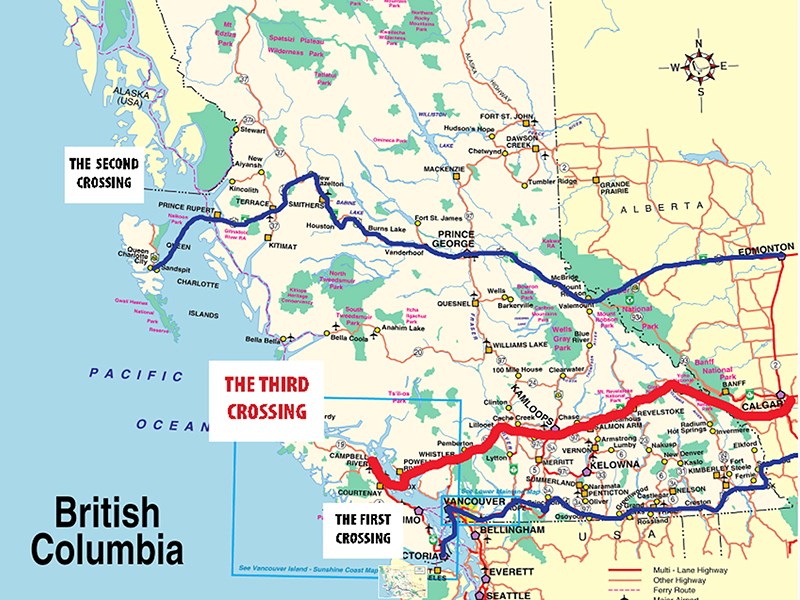Reaction to the release of the provincial government’s report on the feasibility of building a fixed link between the Sunshine Coast and Lower Mainland has been mixed.
The report by RF Binnie and Associates, ordered in 2016 by the previous Liberal government at a cost of $250,000, was made public on December 7.
It concluded the four options, including a road link between Port Mellon and Squamish; a bridge across Howe Sound; a bridge link from Saltery Bay to Earls Cove; and a road from Powell River to Squamish were technically possible but did not forecast enough financial benefit to proceed.
“The report answers the questions people had,” said Powell River-Sunshine Coast MLA Nicholas Simons. “I don't think the issue has been completely addressed, but it gives us better information than we've ever had before as to the cost-benefit analysis. It's clear at this point that people want better ferry service.”
The only link to receive strong public support was the Howe Sound option, with 45 per cent of people who responded to a survey supporting the idea.
The report did not look into a concept promoted by Third Crossing Society advocates, who propose a link from Vancouver Island to Alberta via the Trans-Canada Highway, by upgrading existing logging roads, tunnelling through Mount Casement and new road construction.
The Binnie report did not address or consider any of the benefits of a third crossing, according to Third Crossing president Gary Fribance.
“The report is pretty much as we expected it to be,” he said. “It hasn't really advanced things very much. They established terms of reference that really didn't have anything to do with the third crossing.”
Third Crossing was critical of the terms of reference used by the consultants. When the society asked for the terms to be expanded it was refused, according to Fribance.
“We will be making a significant statement after we have reviewed the matter in some considerable detail,” said Fribance. “We have substantial knowledge of the issues. It's not just about connecting Metro Vancouver and Powell River.”
Fribance said he is not surprised by the report because it was limited to four scenarios and contained nothing in line with a third crossing of the entire province to Vancouver Island.
“They never looked at any of the benefits we proposed,” he said.
The Howe Sound bridge option was estimated to cost approximately $2.7 billion, compared with $722 million for Langdale-Horseshoe Bay ferry improvements, including new vessels and capital costs.
Costs are just estimates, according to Powell River Regional District Area Electoral Area C director Colin Palmer, who also serves as Third Crossing Society vice-president.
The society went before the regional district in May to request $4,000 in funding to go toward efforts to advance its plan, but was rejected until the fixed-link study was released. With the conclusions contained in the report, Palmer said he anticipates there will not be funds forthcoming from the district.
“People in Powell River now will have to realize we're going to be totally dependent on the ferries,” said Palmer. “The ferries are going to cost billions.”
Simons said the NDP government will focus on improving transportation infrastructure, but that will not include fixed links.
“An announcement on review of ferries is about to take place and my expectation is that it will review everything to do with ferries,” said Simons. “We're going to be looking at making sure the public has some say and the public interest is protected in how BC Ferries is run.”
Simons said the announcement of the ferries review could come as early as the week of December 18.



